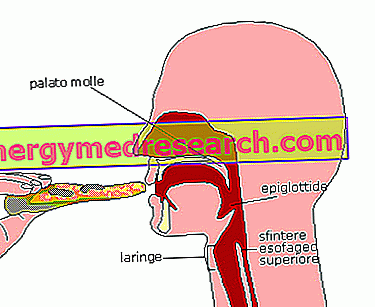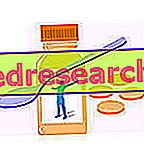Swallowing is the passage of the bolus from the mouth to the stomach. The bolus consists of the food torn during chewing, combined with salivary secretions and compacted by the action of the tongue.
Swallowing is a rather complex event, because it sees the participation of various anatomical structures, including a short canal, called pharynx, common to the digestive and respiratory systems. Along the pharynx, which communicates superiorly with the nasal cavities and inferiorly with the esophagus and larynx, both the alimentary bolus directed towards the esophagus and the respiratory air coming from the nose and mouth and conveyed towards the larynx, trachea and lungs can pass.
The mechanism of swallowing aims to channel the bolus into the esophagus and prevent it from entering the nasal cavities or trachea. In addition to the food bolus, the act of swallowing pushes liquids and saliva secreted into the esophagus throughout the day.
The input for the beginning of the swallowing is voluntary, however after being triggered by a conscious mechanism, the whole process continues autonomously.
When the tongue pushes the bolus against the posterior walls of the mouth, the mechanical receptors in the oral cavity inform the central nervous system, which modulates the contraction and relaxation of the muscles of the oral cavity, pharynx and esophagus.
The recruitment or inhibition of these muscles is intended to exclude the respiratory tract. The soft palate is raised to prevent the bolus from rising along the nasal cavities. At the same time, to avoid the bolus descending into the larynx and trachea, a cartilaginous valve called epiglottis is recruited which, activated by the laryngeal muscles, prevents the bolus from taking the wrong path. The epiglottis closes a small space behind the larynx and is called the glottis. During this first phase of swallowing the respiratory act is interrupted (swallowing apnea).
Pharynx and esophagus are separated by a muscular ring, called the upper esophageal sphincter. At rest the musculature that constitutes it is contracted and the sphincter is closed. During swallowing, signals from the central nervous system release it in response to mechanical and chemical stimuli from the oral cavity.
When the bolus has passed completely through this sphincter, the soft palate returns to the resting position, the glottis opens and the upper esophageal sphincter closes.

The esophagus is a tube that has the purpose of transferring the bolus from the pharynx to the stomach. Esophagus and stomach are separated from the lower esophageal sphincter, also called cardias.
Thanks to the force of gravity and the contraction of the muscle cells present along the wall of the esophagus, food is pushed towards the stomach. In particular, the muscular rings produce contraction waves, called peristaltic, which, stimulated by the presence of bolus, favor the annular contraction upstream and the relaxation downstream, thus facilitating the progression of the bolus downwards. The complex of contractions and relaxation is called peristalsis.
Peristaltic contractions are propulsive and are a feature of the entire digestive system. In addition to the esophagus we also find them in the stomach and intestines, always calibrated so as to push the contents in an aboral direction (from the mouth to the anus). The only exception is vomiting, during which antiperistaltic contractions arise which from the initial part of the intestine favor the elimination of the chyme through the mouth.
Thanks to the peristaltic contraction the bolus reaches the lower esophageal sphincter. When this muscle ring is struck by peristaltic contraction it opens, favoring the entrance of the bolus into the stomach and ending the swallowing.
Sometimes a single peristaltic contraction is not enough to get the bolus into the stomach, for example when eating sticky food. In this case other peristaltic contractions arise, more saliva is secreted and swallowed and the swallowing mechanism is repeated, favoring the progression of the bolus in the esophagus.
At rest esophagus and stomach are two separate units, since the cardia is closed. This is an important defense mechanism, as the contents of the stomach are extremely acidic and its rise along the esophagus would strongly damage the cells (see: esophageal reflux).
Dysphagia: this term indicates the objective difficulty in swallowing solid or liquid foods. Always harassing and sometimes painful, it can be caused by congenital or acquired anatomical alterations, chronic or transient inflammatory processes, metabolic diseases or due to the presence of a foreign body.



